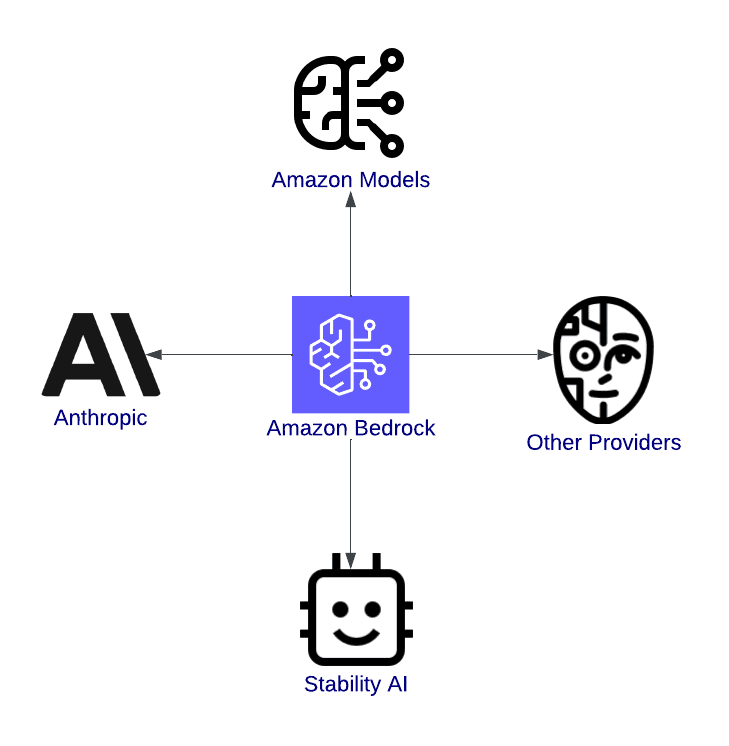300
Level 300: Builder
Building complete AI solutions and understanding architecture
Focus: Complete AI system development
36 resources3 categories5 resource types
Filter Resources
guide Resources(21)

L300Jun 25
guideFrameworks & Platforms
Why Your Enterprise Needs Google Agent Space | by Biswanath Giri
Google Agent Space, a platform by Google Cloud, empowers enterprises to create, deploy, and manage AI agents leveraging Google's advanced AI technologies. This article highlights how Agent Space facilitates seamless integration with popular apps, enables multimodal search across enterprise data, drives impact through content generation and automation, and unlocks innovation with AI agents, emphasizing enterprise-grade security and compliance.

L300Apr 9
guideFrameworks & Platforms
Inside Google Cloud Agentspace: Overview and UI Walkthrough
Google Cloud's Agentspace is a powerful Enterprise Search and Assistant platform that utilizes intelligent agents powered by Gemini reasoning to enhance productivity by tackling information silos. This article provides an overview and UI walkthrough of Agentspace, offering insights into how it can transform enterprise information access and boost productivity, making it valuable for AI developers interested in building AI assistants and enterprise search solutions.
L300Mar 17
guideApplications & Impact
Identifying and Prioritizing Artificial Intelligence Use Cases ... - Medium
This article delves into the systematic process of identifying and prioritizing high-impact AI use cases for enterprise implementation, covering strategic imperatives, alignment with core strategies, measuring business value, feasibility, data readiness, risk management, ROI, scalability, ethical considerations, talent and skills, sustainability, adoption, and customer impact. It provides a comprehensive blueprint for leaders navigating AI adoption in organizations.

L300Jul 26, 2024
guideApplications & Impact
My AI Deep Dive and The Use Cases for AI | by Travis Reeder
This article delves into the use cases of AI, focusing on image/media generation and AI customer support chat systems. The author shares insights from their AI deep dive, including building AI apps like chatbots on Telegram to showcase AI applications. AI developers can learn about practical AI implementations and the potential of AI in enhancing existing products.

L300Aug 13
guideBuild & Tooling
The Complete Google A2A + Azure AI Foundry + Semantic Kernel ...
This article provides a step-by-step guide for .NET developers to create a modular multi-agent system using Google's A2A, Microsoft's Semantic Kernel, and Semantic Kernel C# SDK. Readers will learn about the architecture of multi-agent systems, setting up A2A servers and clients, and real-time orchestration, offering practical insights into building AI agents that collaborate seamlessly.

L300Aug 13
guideFrameworks & Platforms
Agent Factory: The new era of agentic AI—common use cases and ...
The blog post introduces the concept of agentic AI in Azure AI Foundry, emphasizing how agents can reason, act, and collaborate to bridge knowledge and outcomes. It discusses common use cases and design patterns for leveraging agentic AI, providing valuable insights for AI developers interested in building intelligent agents.

L300Aug 7
guideBuild & Tooling
Building Smarter AI Agents with Azure AI Foundry and Model ...
This article introduces the Model Context Protocol (MCP) and its significance for Azure AI Foundry, enabling seamless integration between AI agents and tools without manual coding. By leveraging MCP, developers can enhance agent development speed, reduce maintenance overhead, and achieve interoperability across Azure and OpenAI platforms.
L300Jul 29
guideBuild & Tooling
Gentle Intro to Azure AI Foundry. What is it? | by Nicolas Anderson
Azure AI Foundry is a comprehensive web portal that consolidates various Azure AI services, facilitating collaborative AI project development, model deployment, testing, and integration of custom data sources. AI developers can leverage Azure AI Foundry to create generative AI applications, deploy models to real-time endpoints, define workflows, and incorporate multiple AI capabilities through Azure AI Services.

L300Jul 14
guideApplications & Impact
The Ultimate Guide to Advanced AI Governance - Tribe AI
This article from Tribe AI provides a comprehensive guide to advanced AI governance, focusing on essential strategies for ensuring organizational compliance with advanced AI systems. It covers core principles, challenges, and best practices in AI governance, emphasizing ethics, transparency, and regulatory standards, offering valuable insights for AI developers and leaders in shaping responsible AI adoption.

L300Jun 12
guideApplications & Impact
Turn Documents into Structured Insights with Mosaic AI Agent Bricks
Mosaic AI Agent Bricks simplifies the extraction of structured data from documents like contracts and invoices without manual labeling or schema training. AI developers can learn how to enhance automation and reduce effort by leveraging schema feedback and AI-assisted evaluation for continuous improvement.

L300Jun 6
guideApplications & Impact
Why AI Projects Fail | Towards Data Science
This article delves into the common reasons why AI projects fail, highlighting challenges such as unclear success metrics, scope creep, and the added layer of probabilistic uncertainty in AI projects. It provides insights on how organizations can avoid these pitfalls and improve the success rate of their AI initiatives, making it a valuable read for AI developers and builders.

L300May 21
guideApplications & Impact
13 foundational AI courses, resources from MIT - Medium
The article introduces 13 foundational AI courses and resources from MIT Open Learning, covering topics like artificial intelligence, machine learning, machine vision, and algorithms. These resources are valuable for AI developers looking to grasp the basics and advance their knowledge in AI technologies.

L300May 21
guideFrameworks & Platforms
V :AI Agents through the Thought-Action-Observation (TAO) Cycle ...
This article explores the Thought-Action-Observation (TAO) cycle in AI agents, emphasizing how agents reason, act, and learn from their experiences. It delves into the core components of the TAO cycle, such as Thought, Action, and Observation, providing insights and real-world examples for understanding how AI agents operate effectively.
L300Feb 5
guideFrameworks & Platforms
Langgraph Supervisor Py
This repository provides a Python library for creating hierarchical multi-agent systems using LangGraph. It allows users to create a supervisor agent to orchestrate multiple specialized agents, with features like tool-based agent handoff mechanism and flexible message history management. The library is built on top of LangGraph, offering support for streaming, memory management, and human-in-the-loop interactions.

L300Jan 29
guideApplications & Impact
Amazon Bedrock: A Complete Guide to Building AI Applications
This article provides a comprehensive guide to Amazon Bedrock, a managed AWS service for accessing and managing foundation models (FMs) essential for generative AI applications. AI developers can learn how to leverage AWS Bedrock to simplify infrastructure management, access cutting-edge AI models, and develop scalable generative AI applications aligned with their goals.
L300Dec 5, 2024
guideApplications & Impact
What Is GraphRAG? - Neo4j
GraphRAG, a retrieval mechanism enhancing GenAI applications by leveraging graph data structures, is discussed in this article. AI developers can learn how GraphRAG optimizes information retrieval in graph databases, offering insights into improving AI systems' performance.

L300Oct 10, 2024
guideApplications & Impact
Build your own AI Agent Observability System | by James Barney
This article provides a walkthrough on building an AI agent observability system using LangChain, Rudderstack, and Clickhouse. It explores the importance of monitoring AI agents in chat systems and delves into the concept of AI observability, offering practical insights for developers interested in enhancing AI system visibility and performance.

L300Sep 12, 2024
guideApplications & Impact
The AI prompt solving any business challenge | by Thack - Medium
This article delves into the transformative impact of effective prompt engineering in AI for solving business challenges. It emphasizes the importance of using specific frameworks to optimize AI models like Claude, Copilot, Perplexity, and others, offering practical insights for AI developers to enhance their prompt creation skills.

L300Apr 21, 2024
guideFrameworks & Platforms
Framework for the Governance of Artificial Intelligence - Medium
This article provides a framework for the governance of artificial intelligence, emphasizing the importance of values like transparency and truth in AI systems. It offers policymakers strategic methodologies for overseeing AI technologies, promoting trust, accountability, and ethical compliance.
L300Oct 17, 2022
guideApplications & Impact
Langchain
LangChain is a framework for building context-aware reasoning applications powered by LLM technology. It enables developers to create AI applications by chaining interoperable components and third-party integrations, simplifying AI development and future-proofing decisions as technology evolves.
L300Aug 30
guideApplications & Impact
What is Graph RAG | Ontotext Fundamentals
Graph RAG is a powerful approach that enhances large language models (LLMs) with external knowledge, enabling more relevant and accurate answers to natural language questions. This article delves into the importance of integrating domain-specific proprietary knowledge into conversational interfaces through the Graph RAG approach, offering valuable insights for AI developers looking to optimize question-answering systems.
Continue Your Learning Journey
Explore other skill levels or browse by category